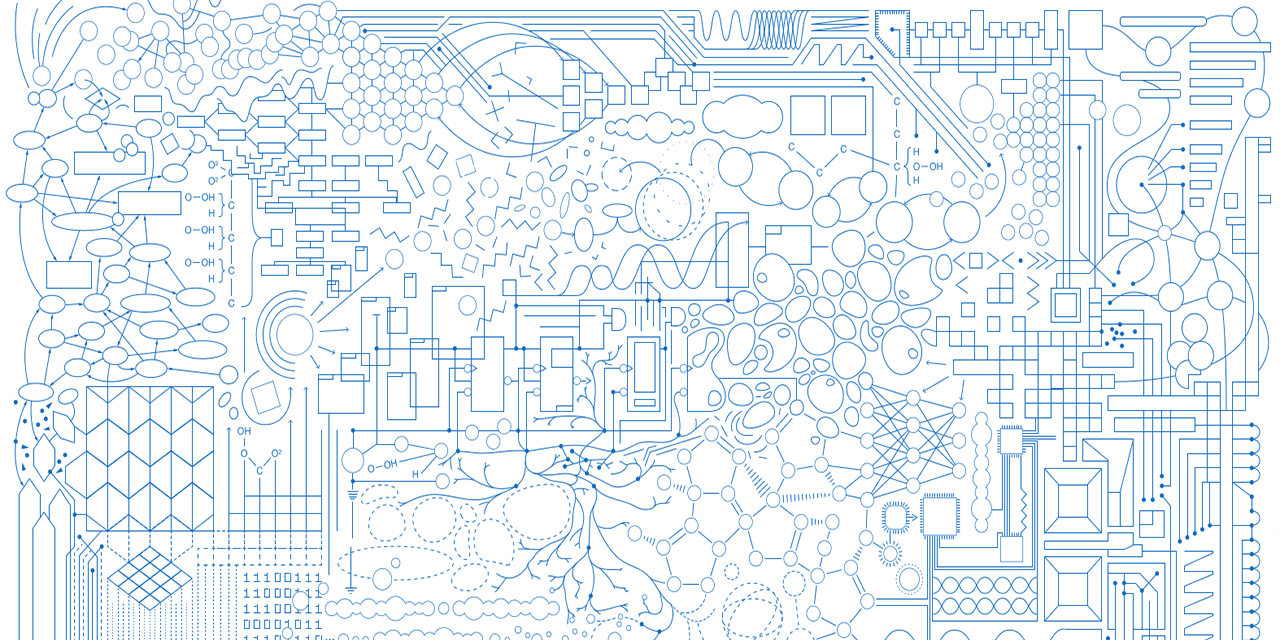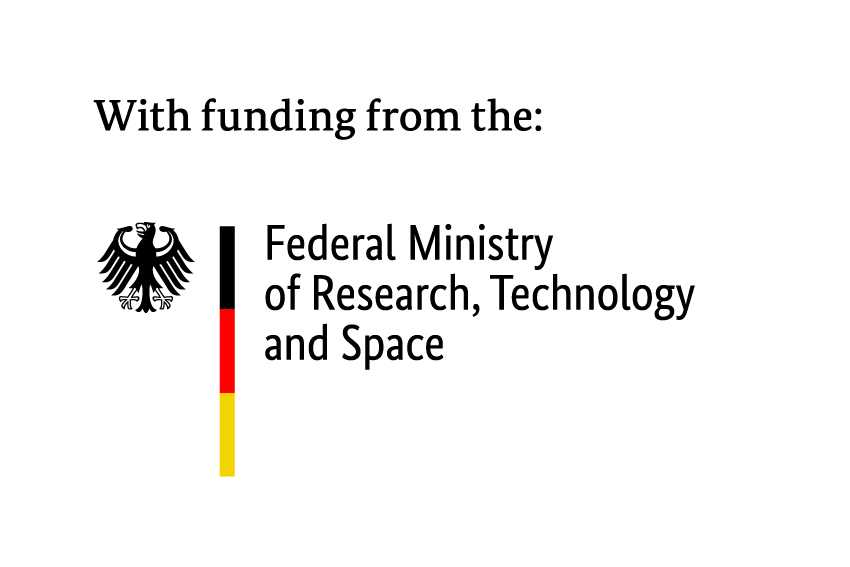Objects of Research: Dawid Kasprowicz
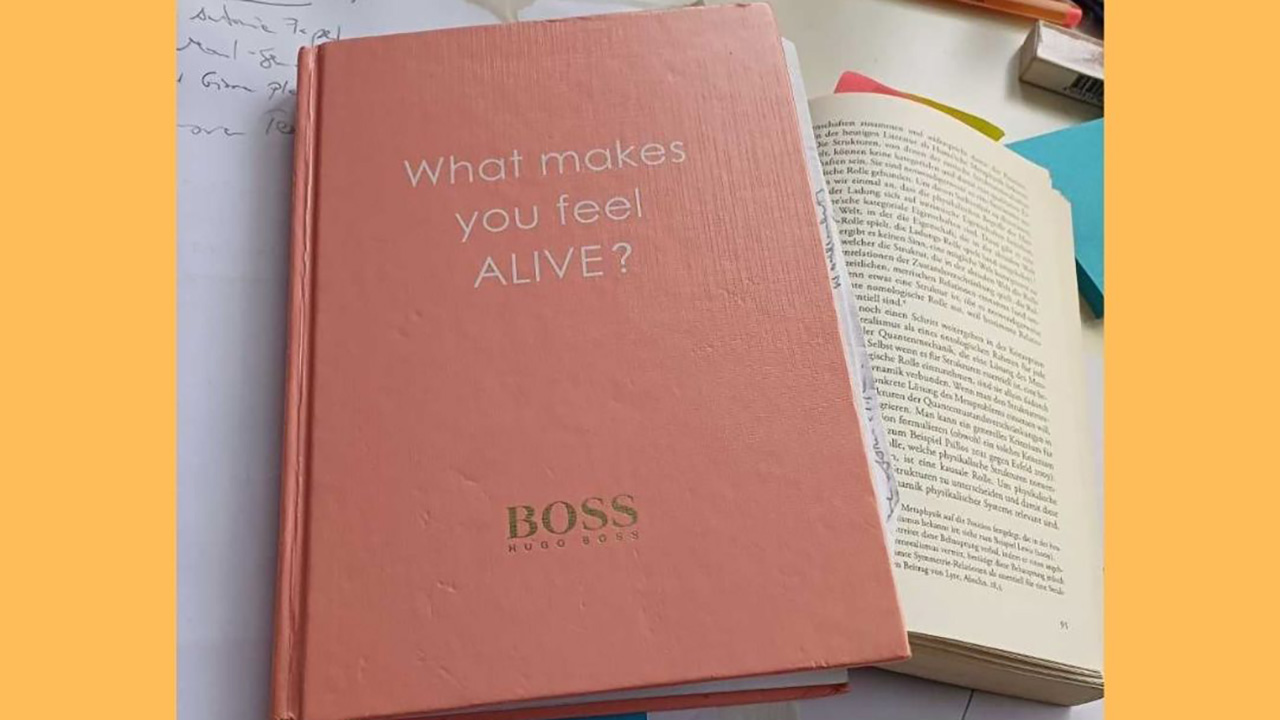
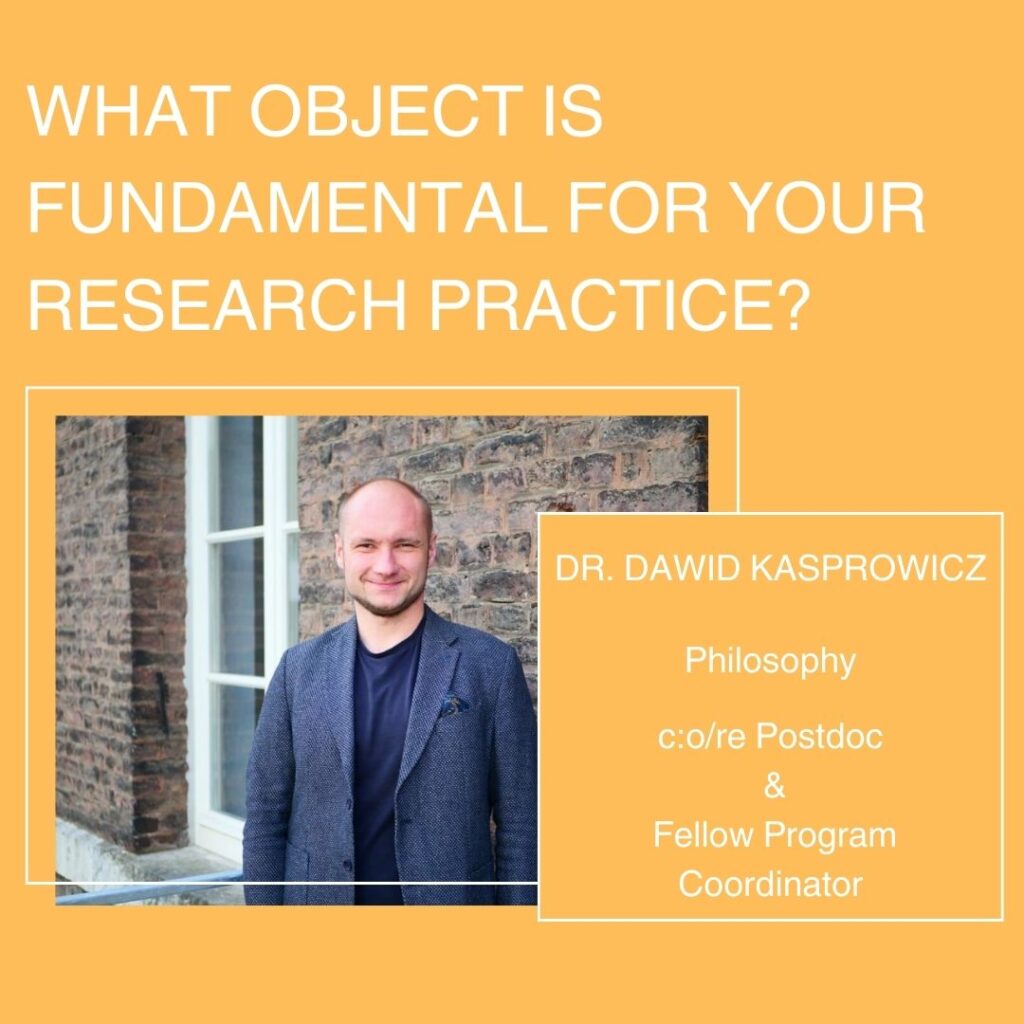
Presenting the next chapter of the “Objects of Research” series, c:o/re Postdoc and Fellow Program Coordinator, Dr. Dawid Kasprowicz, whose main research fields include theory and history of embodiment, phenomenology, human-robot-Interaction, philosophy of computer simulation, joins us with a picture of his fundamental object for his research practice:
“This is a notebook my Mom gave me. She had it as a kind of leftover from a shopping tour and she thought that it might be of use for my work. And of course, she was right. And as you know, research always starts with a good question that attracts attention.”
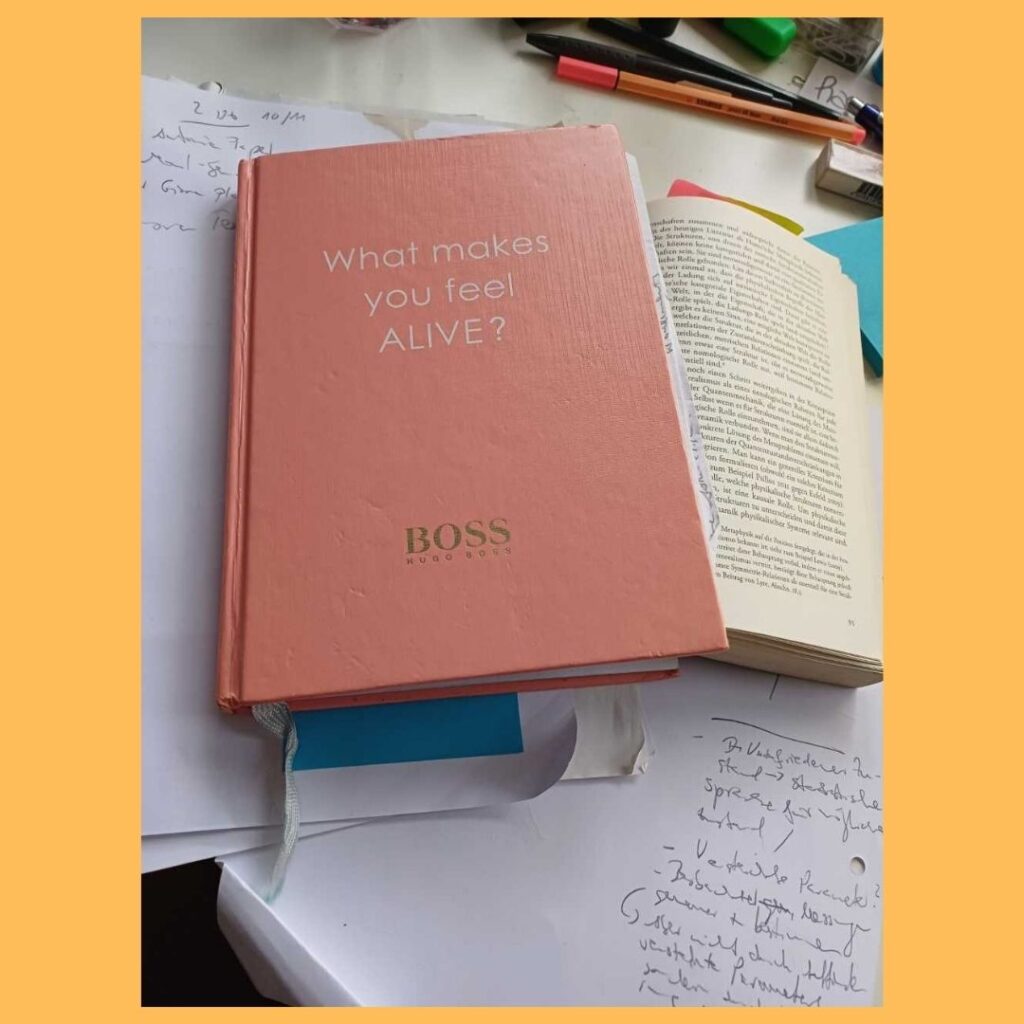
Would you like to find out more about our Objects of Research series at c:o/re? Then take a look at the pictures by Benjamin Peters, Andoni Ibarra, Hadeel Naeem, Alin Olteanu, Hans Ekkehard Plesser, Ana María Guzmán, Andrei Korbut, Erica Onnis, Phillip H. Roth and Bart Penders.
Get to know our Fellows: Guillaume Yon

Get to know our current fellows and gain an impression of their research.
In a new series of short videos, we asked them to introduce themselves, talk about their work at c:o/re, the impact of their research on society and give book recommendations.
You can now watch the sixth video of Dr. Guillaume Yon, historian of economics, on our YouTube channel:
Check out our media section or our YouTube channel to have a look at the other videos.
Workshop “Art, Science, the Public”
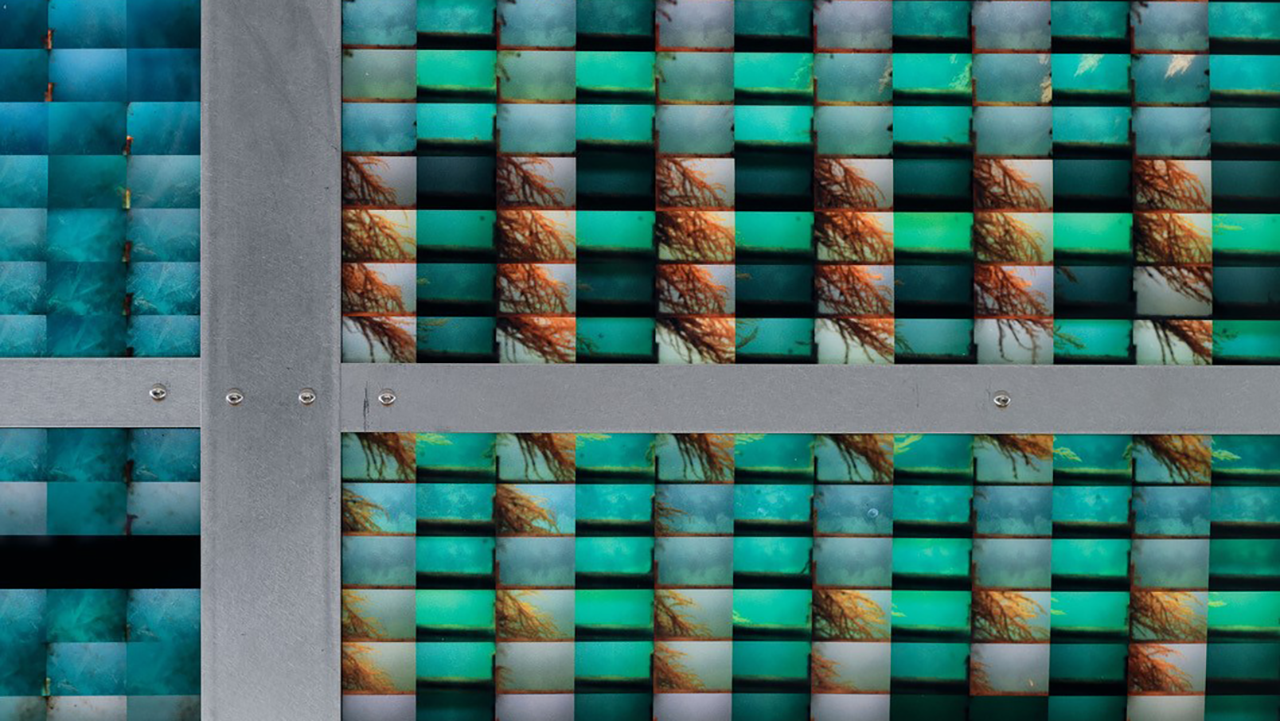
On 16 February and 17 February 2024, the workshop “Art, Science, the Public” took place at the KHK c:o/re in cooperation with the project “Computer Signals: Art and Biology in the Age of Digital Experimentation“, a research collaboration between artists, biologists and humanities scholars, in which c:o/re director Gabriele Gramelsberger has been involved since a long time.
Together with representatives and colleagues from the research group “Computer Signals”, PACT Zollverein and RWTH Knowledge Hub, different formats and practices of science communication, in particular those that experiment with artistic forms, were discussed. The aim of the workshop was to exchange ideas and best practice examples on the interface between science and art and the associated communication challenges.

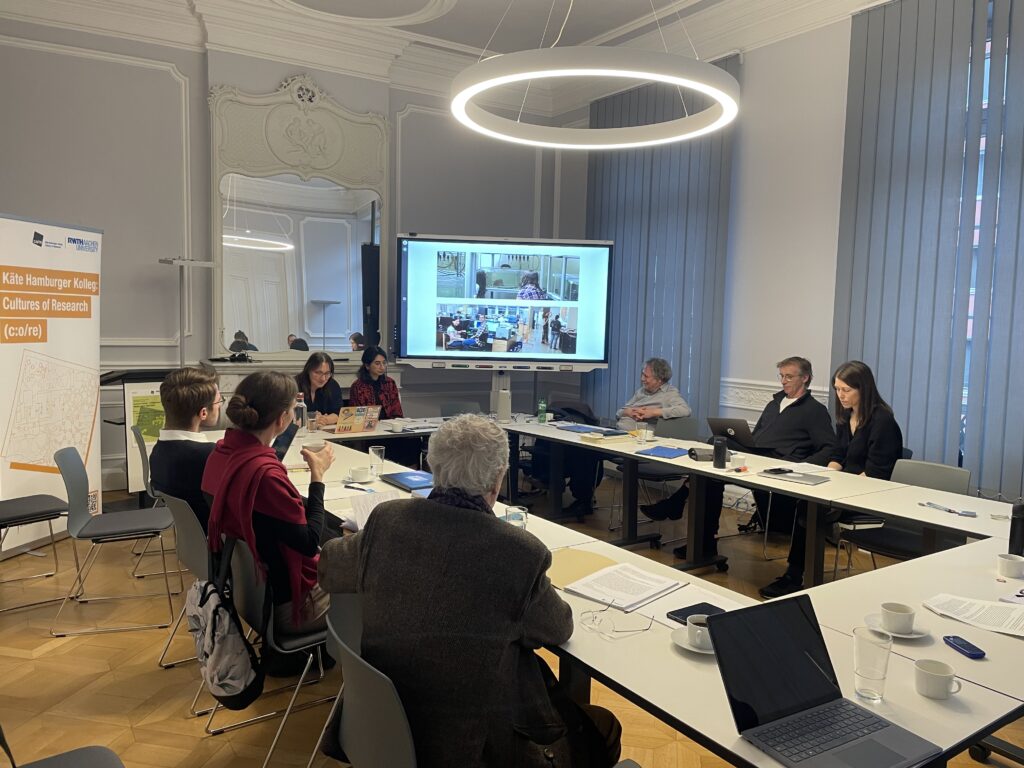
A special highlight was the sound work by Valentina Vuksic, a transdisciplinary associate of the project “Computer Signals”. During the workshop, Valentina set up an installation format in which the archive of sounds, produced by the research project, could be explored.
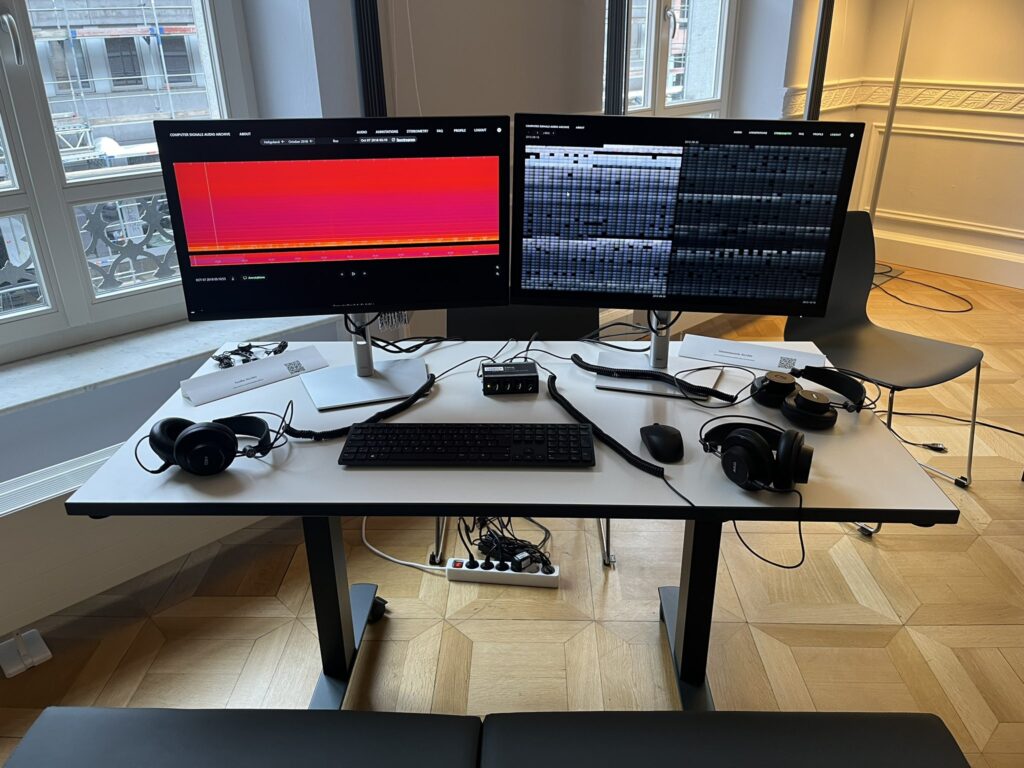
In the evening, the workshop was concluded with a live performance by Valentina, in which she presented artistic formats that stem from straightforward audifications of computational processes with little aesthetic consideration taken at first, and yet, took on a double life as musical works outside of their context.
The electromagnetic, electric and mechanical recordings originate from the research infrastructure of the biological laboratory at UT Austin by Hans Hofmann and the underwater observatory RemOS in Kongsfjorden, Spitsbergen by Philipp Fischer (Alfred-Wegener-Institut for polar and marine research). The audio material stays unprocessed; it is merely re-arranged and layered. The sonic works set out from digital data generation as part of scientific procedures to take a specific course outlined by a series of sonic extracts.
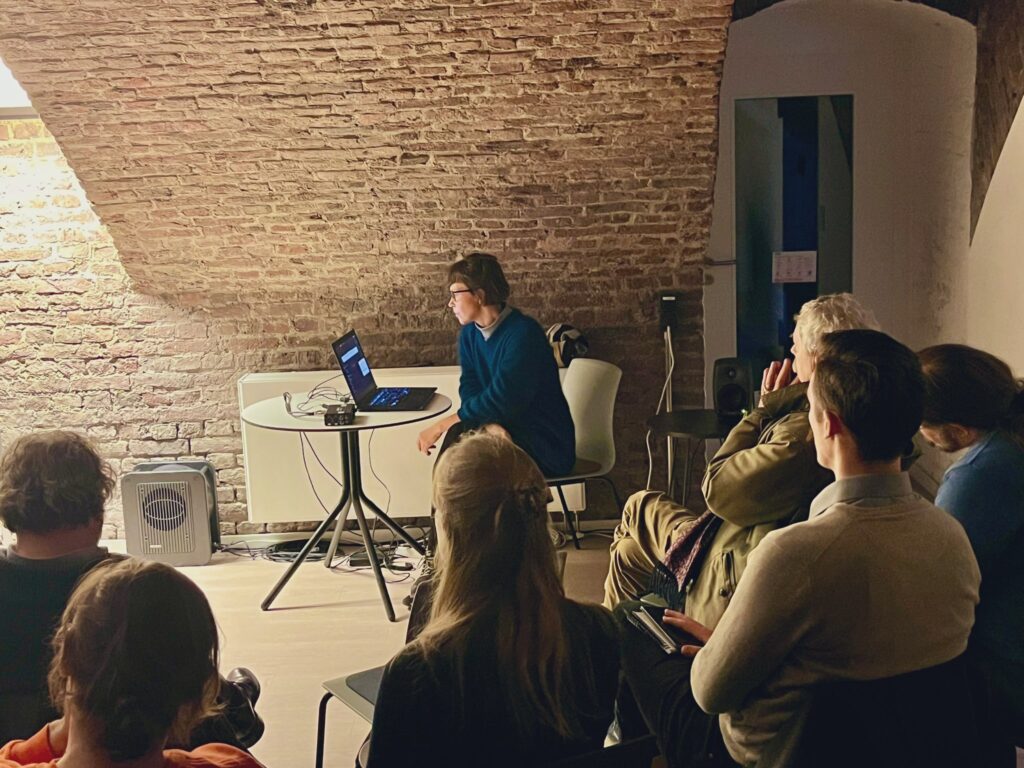
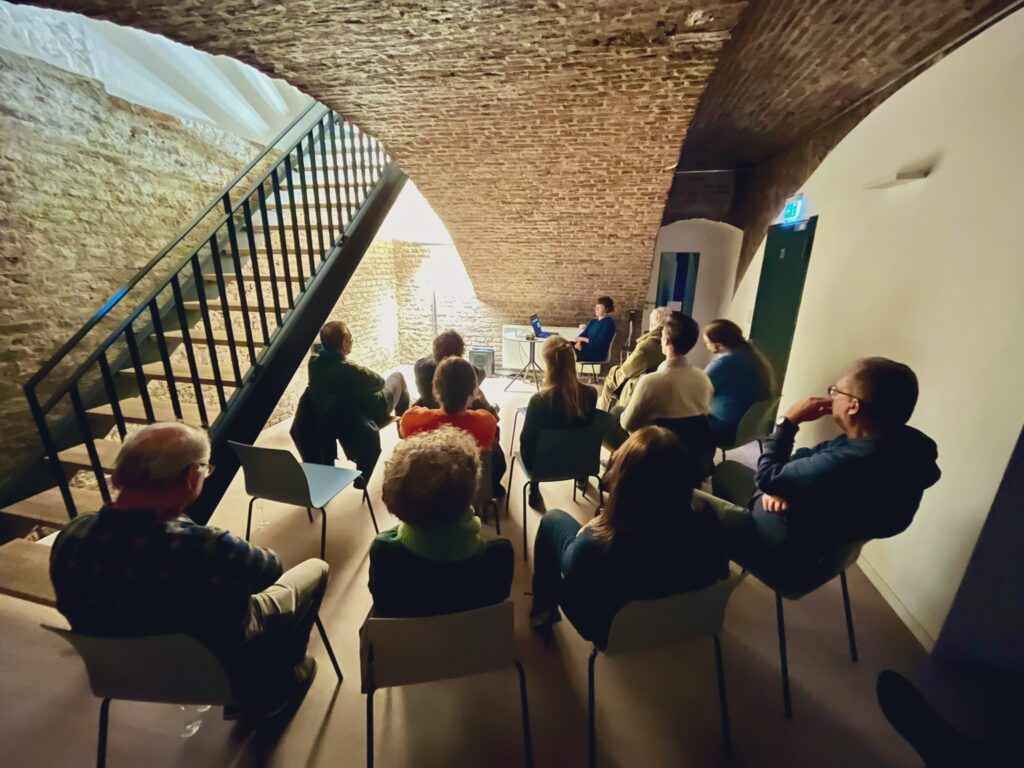
Here you can listen to excerpts from Valentina’s work that she presented during the evening:
Photos and videos by Jana Hambitzer
Header picture: RemOs1, Archiv Stereometrie (15. 9. 2012 – 16. 6. 2020), 2022. Detailansicht Fotoinstallation Ausstellung «Daten lauschen» im Deutschen Schifffahrtsmuseum, Bremerhaven 2022. Fotodruck auf Polycarbonatplatten, 135.168 Bildpaare, 2.32 x 1.59 x 60 m. Fotografie: Marc Latzel.
Objects of Research: Bart Penders
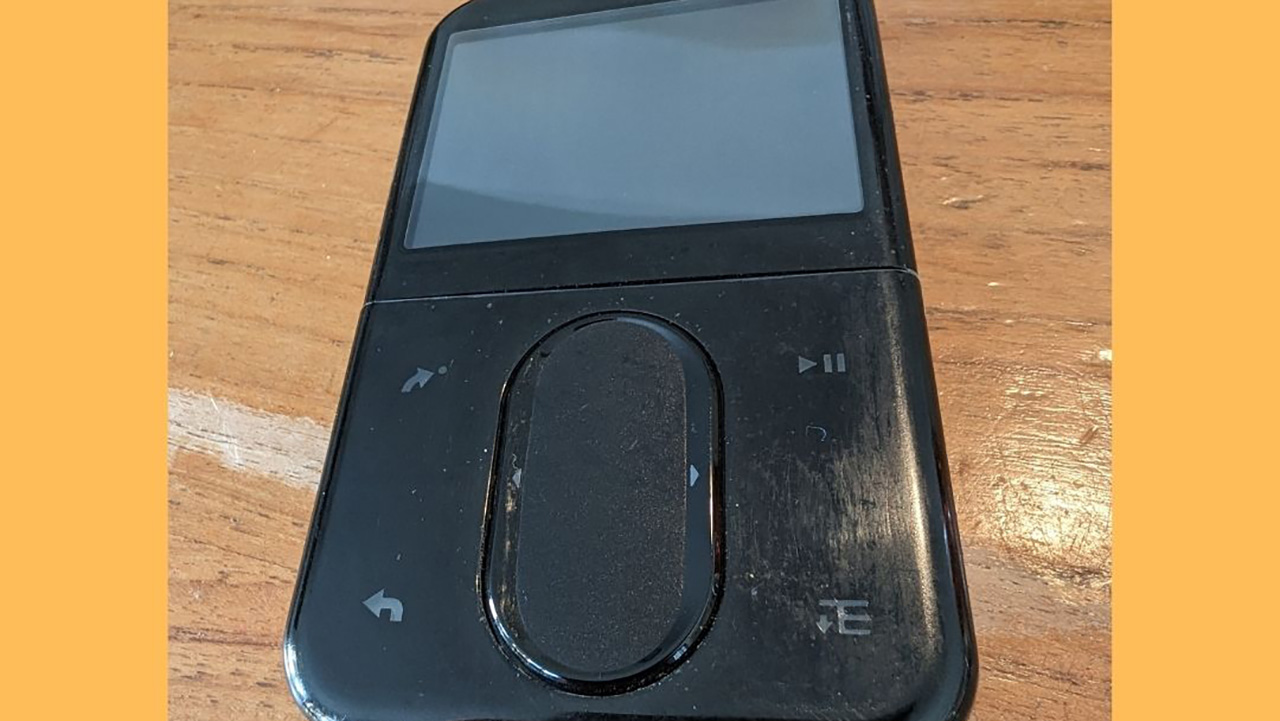
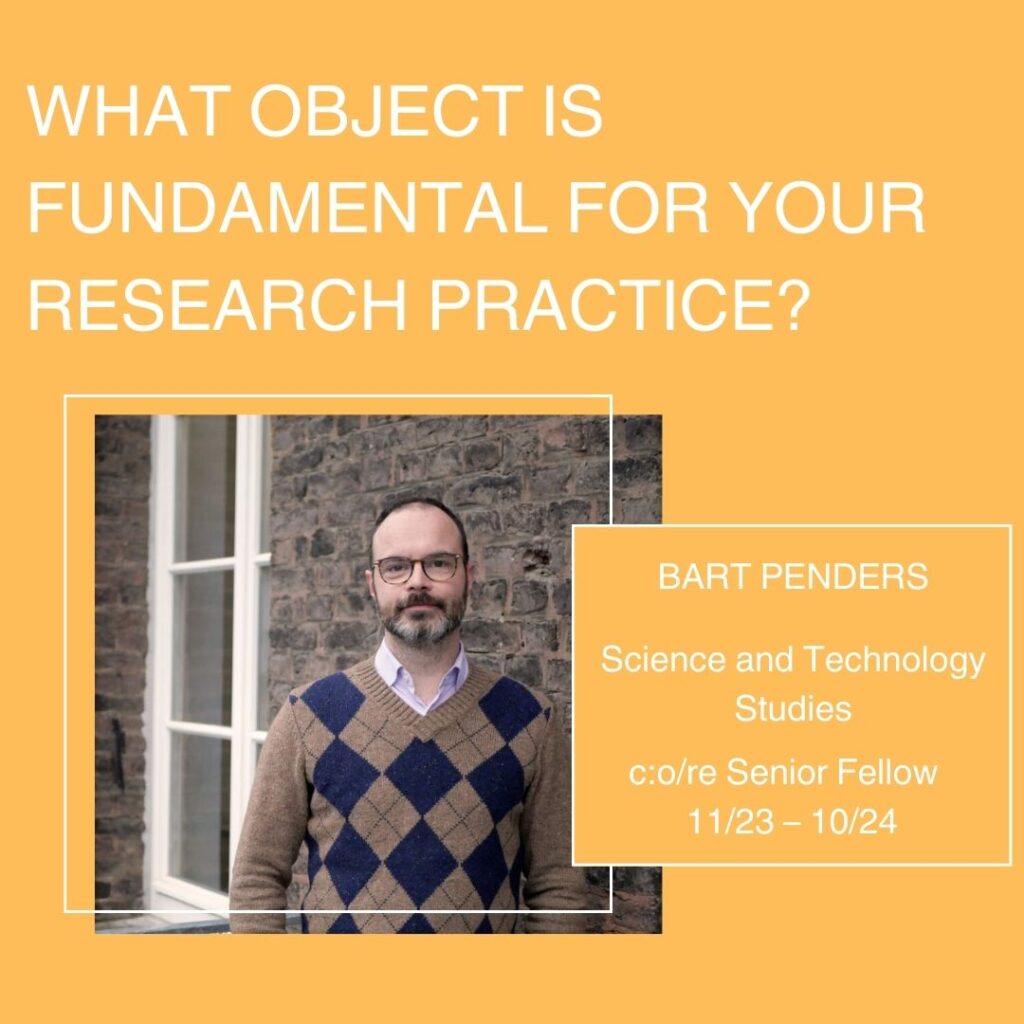
Here comes the new edition of our “Objects of Research” series. c:o/re Senior Fellow Dr. Bart Penders provides an insight into his research work and introduces an important tool for this:
“As part of the work I do at KHK c:/ore, as well as extending beyond that, I collect empirical data. In my case, that data consists of records of interviews with scientists and others. Those records can be notes, but they can also be integral recordings of the conversations.
Relying on technology for the production of data is what scientists do on a daily basis. With that comes a healthy level of paranoia around that technology. Calibrating measurement instruments, measurement triangulation, and comparisons to earlier and future records all help us to alleviate that paranoia. I am not immune and my coping mechanism has been, for many years, to take a spare recording device with me.
This is that spare, my backup, and thereby the materialisation of how to deal with moderate levels of technological paranoia. It is not actually a formal voice recorder, but an old digital music player I have had for 15 years, the Creative Zen Vision M. It has an excellent microphone, abundant storage capacity (30 gigabytes) and, quite importantly, no remote access options. That last part is quite important to me, because it ensures that the recording cannot enter the ‘cloud’ and be accessed by anyone but me. Technologically, it is outdated. It no longer serves its original purpose: I never listen to music on it. Instead, it has donned a new mantle as a research tool.”
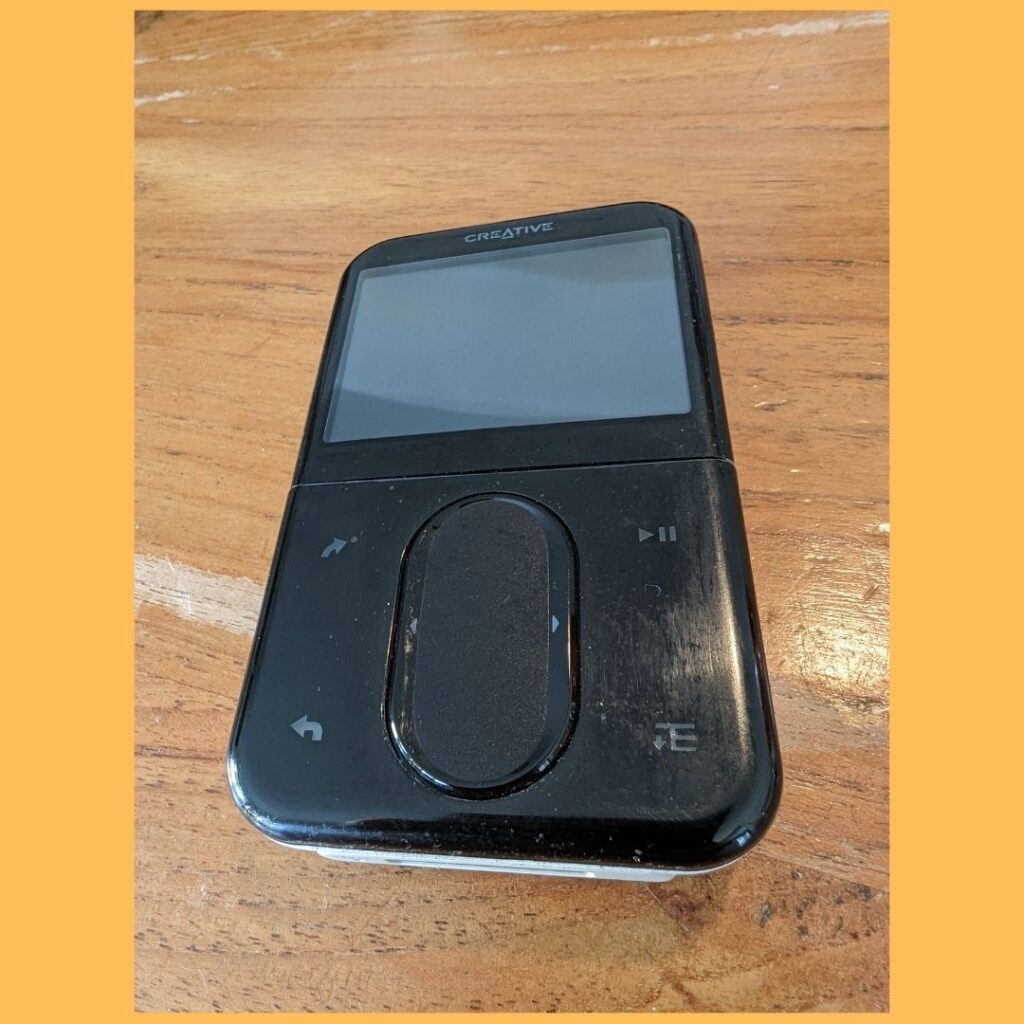
Would you like to find out more about our Objects of Research series at c:o/re? Then take a look at the pictures by Benjamin Peters, Andoni Ibarra, Hadeel Naeem, Alin Olteanu, Hans Ekkehard Plesser, Ana María Guzmán, Andrei Korbut, Erica Onnis and Phillip H. Roth.
Recap: Lecture Series “Lifelikeness”
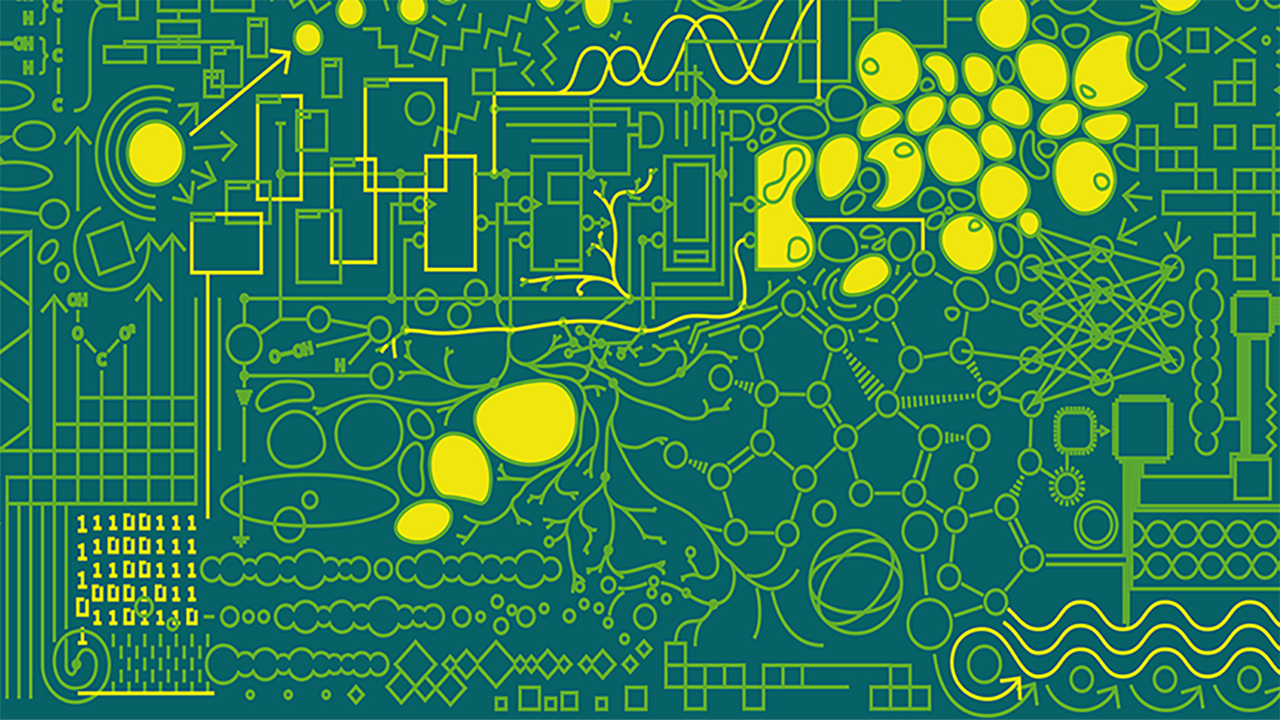
As the 2023/2024 winter term is coming to an end, we look back on this semester’s lecture series on “Lifelikeness”. Having started with c:o/re director Gabriele Gramelsberger’s lecture on October 25th, 2023, the series concluded recently with a lecture from Michael Friedman on February 7th, 2024.
Over the course of seven captivating lectures, we delved deep into debates on the concept of “Lifelikeness”, having explored its various dimensions, implications and interpretations. Throughout the series, we had the opportunity to hear from seven different speakers, learning what “Lifelikeness” means to them and sharing the joy of hosting them at KHK c:o/re in Aachen.
Let’s come together to summarize this intriguing lecture series.
Life from scratch – Gabriele Gramelsberger

Opening the “Lifelikeness” lecture series on October 25th, c:o/re director Prof. Dr. Gabriele Gramelsberger gave a talk entitled “Life from scratch”. We got to explore the fascinating world of synthetic biology and the quest to create life from scratch.
This lecture provided an insightful introduction to the history of re-genesis, followed by an overview of current practices in synthetic biology of programming life. It concluded with some reflections on the proliferating “domain of synthetica.”
For a more detailed overview of the talk, you can visit our blog post on the first talk of the “Lifelikeness” series.
Robot, a Laboratory “Animal”: Producing Knowledge through and about Human-Robot Interaction – Andrei Korbut
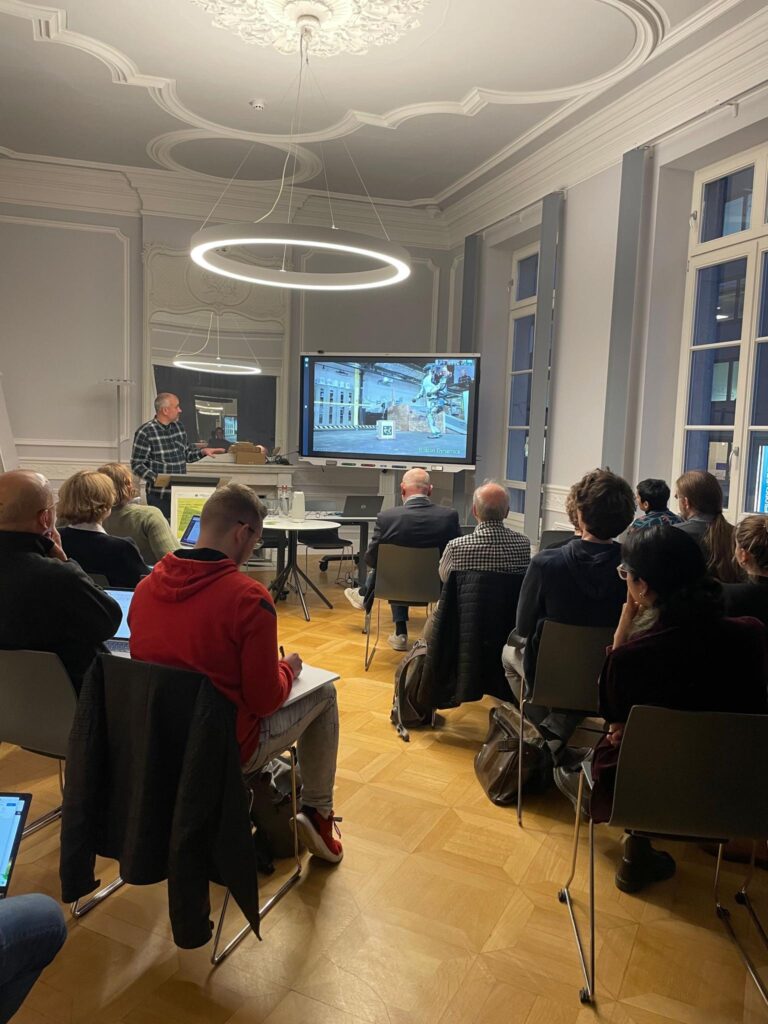
For the second lecture, we were delighted to listen to c:o/re Junior Fellow Dr. Andrei Korbut, who explored the use of robots (primarily humanoid) in robotics laboratories to produce knowledge about human–robot interaction (HRI).
The lecture introduced a conceptual framework for studying robots as contemporary laboratory “animals”, based on the notion of different types of lifelikeness that can be ascribed to humanoid robots. It convincingly argued that robots, unlike other types of laboratory “living instruments”, allow for a much closer connection between tools and objects in knowledge production because they hinder their being perception as “natural objects”.
For a better insight, have a look at our blog post on the second talk of the “Lifelikeness” series here.
When asked to reflect on what the word “Lifelikeness” evoked for him, Andrei Korbut offered the following answer:
“When I hear the word ‘lifelikeness’, I think of imitation. For me, lifelikeness is something that is produced, but also something that is imputed. People are very good at seeing life in the inanimate world around them, but they are also very interested in creating the illusion of life. This makes lifelikeness not only a perceptual but also a cultural phenomenon. Hence, there are many forms of lifelikeness, serving many purposes, from entertainment to curing disease.”
Neuromorphic Computing: Inspiration from the Brain for Future AI Technologies – Emre Neftci
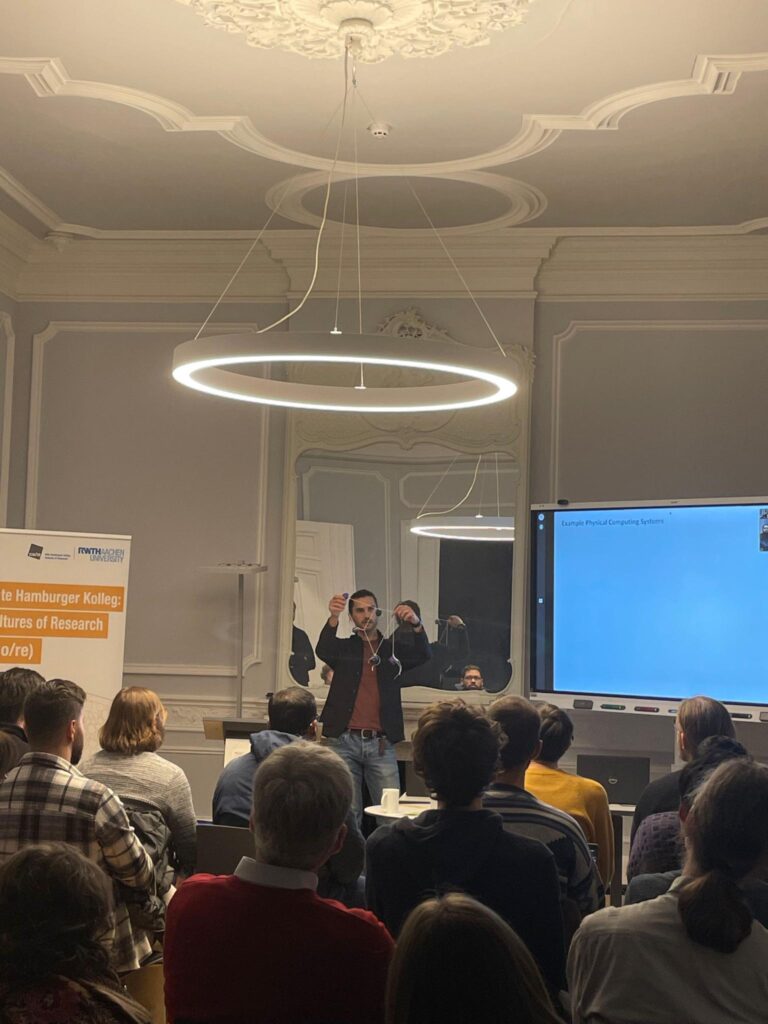
Is it possible to emulate the brain’s efficiency and robustness? Will such brain-inspired solutions enhance state-of-the-art AI algorithms or will they lead to yet different problematizations? In our third lecture, Prof. Dr. Emre Neftci shed light on these questions from the perspective of brain-inspired “neuromorphic computing”, explaining how current AI was shaped by neuroscience, what stands in the way of emulating the brain, and the potential benefits of taking a deep dive into how life shaped computation.
In response to our question about his initial impressions of the word “Lifelikeness,” he answered:
“In the neuromorphic computing research area “lifelikeness” is a central and hotly debated
question. How much of the brain does one need to emulate to build intelligent machines? Do we need to closely mimic biology, or can we get away by mimicking the brain’s (so far unknown) computing principles? Foundational models such as chatGPT seem to indicate the latter, but at a huge cost in energy and hardware. However, if we hope for such powerful models to run on our daily devices, being closer to biology may be necessary.”
Art’s Mediation as Remediation: On Some Artworks and their reuses of Toxic Materials – Esther Leslie
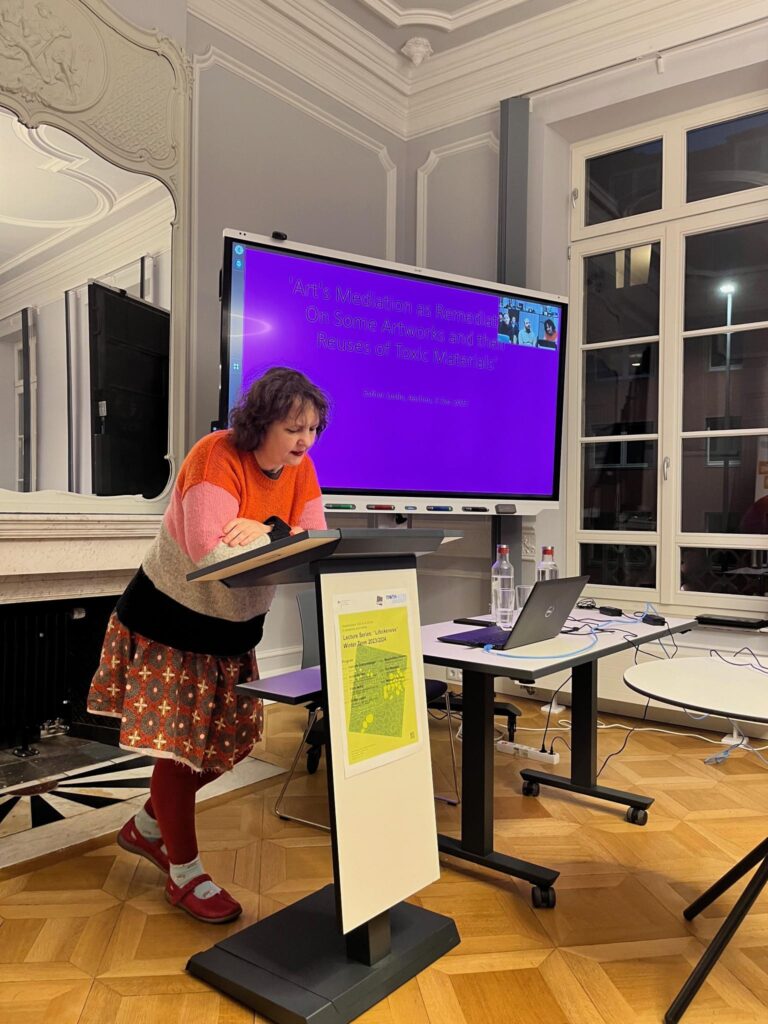
Drawing on the various ways in which Walter Benjamin and T.W. Adorno addressed both the assault on nature, in the name of progress, and the possibility – or significance – of art in and after catastrophe, a number of contemporary art practices were examined in the fourth lecture, by Prof. Esther Leslie as a working through of art as a form of mediation.
Leslie looked at this mediation from multiple perspectives, between nature and culture, between world and self, between politics and aesthetics and their connections to toxic materials in order to reflect the transmutational capacities of art practice.
The talk was embedded in a workshop on “Toxic Material(itie)s: Eco-Material Entanglements in Art” taking place at KHK c:o/re, amongst others organized by Alumni Fellow Dr. Kyveli Mavrokordopoulou.
Towards an Ecology of Technoscience – Massimiliano Simons

The goal of our fifth lecture, by Dr. Massimiliano Simons on January 10th, was the development of a general framework for how and why technoscience can be characterized by a fascination with self-organization and loss of control.
Simons introduced a case on newly emerging technologies, which involve a loss of control in scientific research: scientists do not have full control over the outcome but grant the system under study a level of autonomy. Machine learning in data science was highlighted as an obvious case, where a problem – often in the form of discriminating between types of data – is solved not by rational design, but by letting a self-learning algorithm find patterns.
In his talk, Simons focused on the life sciences, and particularly the method of directed evolution in synthetic biology, which is said to follow similar lines: solving a set of problems – how to design specific molecules or enzymes – not by rational design, but by creating a context in which natural selection solves the problem.
Reflecting his initial associations upon the term “Lifelikeness,” he stated:
“For me, lifelikeness refers to systems that show behavior to uphold a certain norm, making a distinction between desirable and undesirable states. What would make it really alive is the subsequent capacity to autonomously create its own and novel norms.”
Flowers for Agouti: Epigenetics and the Genealogy of Uplift – Ben Woodard
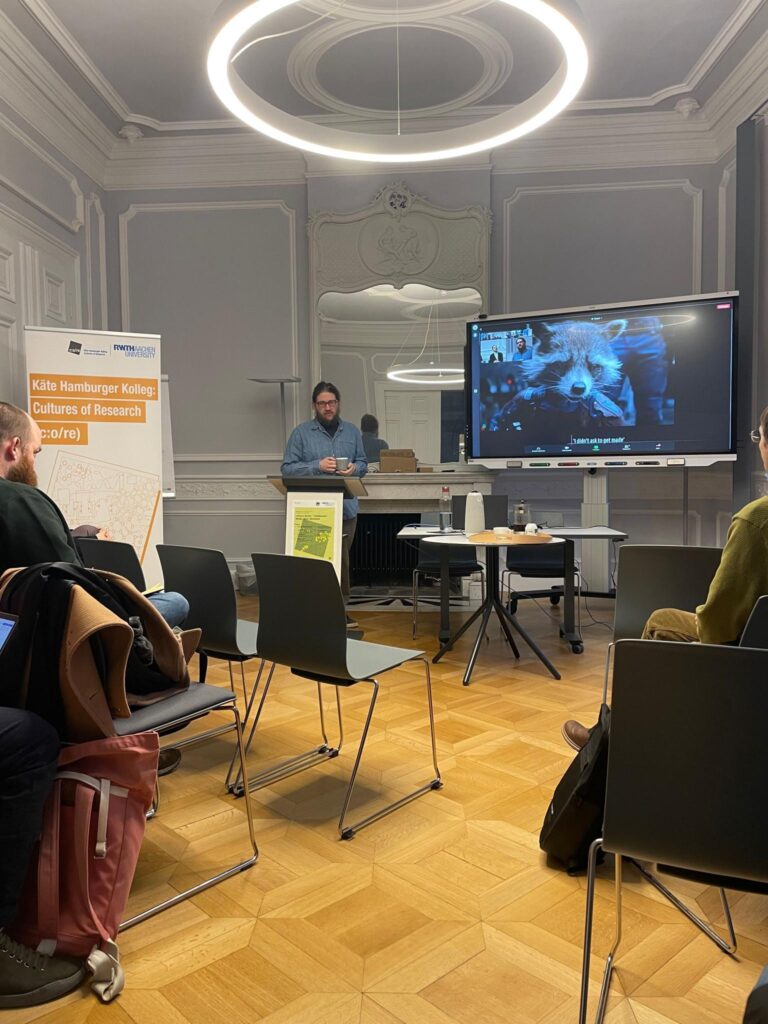
In the sixth lecture, Dr. Ben Woodard joined us with a talk that examined how recent discussions of epigenetics complicated notions of a too hasty equation of cognition and agency both within humanity and across species that the concept of uplift is championed as an anti-Darwinian politics of Eurocentric teleology.
According to Woodard, the notion of uplift, particularly as proliferated under the banner of transhumanism carries racist undertones. Like many concepts in science and technology studies, uplift carries views stemming from science-fiction and social justice. It refers to the raising up of one species by another as well as a historical (and often racially codified) way of speaking of how one group can be raised above others within limiting structural conditions. He underlined that while these notions seem disparate, they in fact have a shared history that hybridizes fictional and non-fictional aspirations for future humanity as well as the origins of civilization.
He answers the question of what he associates with “Lifelikeness” as follows:
“Lifelikeness to me suggests behavior that appears purposive – something seems alive when it is actively seeking out new environments as well as changing its current environment to suit its needs.”
Bio-inspired Materials and Dreams of Inspiration – Michael Friedman
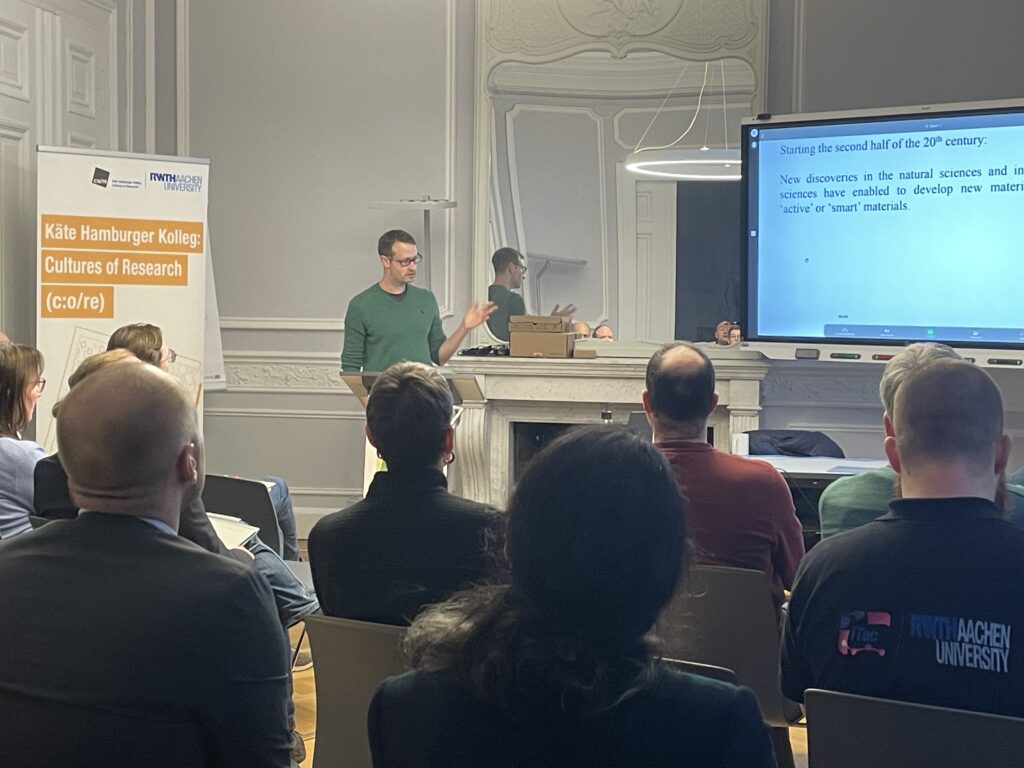
Dr. Michael Friedman took the stage during our seventh and last lecture of the “Lifelikeness” lecture series to discuss whether the dream of inspiration from nature for manufactured active materials is not a revision of a much older view, or rather metaphor, to read and finally write the ‘book’ of nature as the scientific analysis of organic materials may lead to the fabrication of these synthetic and bio-inspired active materials.
The model for these newly developed ‘active’ and ‘Bio-inspired’ materials, considered as entities that are able to ‘sense’ and respond to their environment, often consists in organic materials, such as the grown wood of trees and the bone formation in living organisms. In this sense the scientists are ‘inspired’ by nature, Michael Friedman stressed.
When invited to share his spontaneous associations with the concept of “Lifelikeness”, he offered his perspective in the following way:
“If one thinks on the recent advancements in materials sciences, then this term certainly underlines human’s dream to create the impossible.”
We are looking forward to Michael Friedman starting his Senior Fellowship at KHK c:o/re in April 2024.
Stay informed about all upcoming c:o/re events and projects, including our next lecture series for Summer Term 2024, by subscribing to our newsletter!
Photos by Jana Hambitzer
Objects of Research: Phillip H. Roth
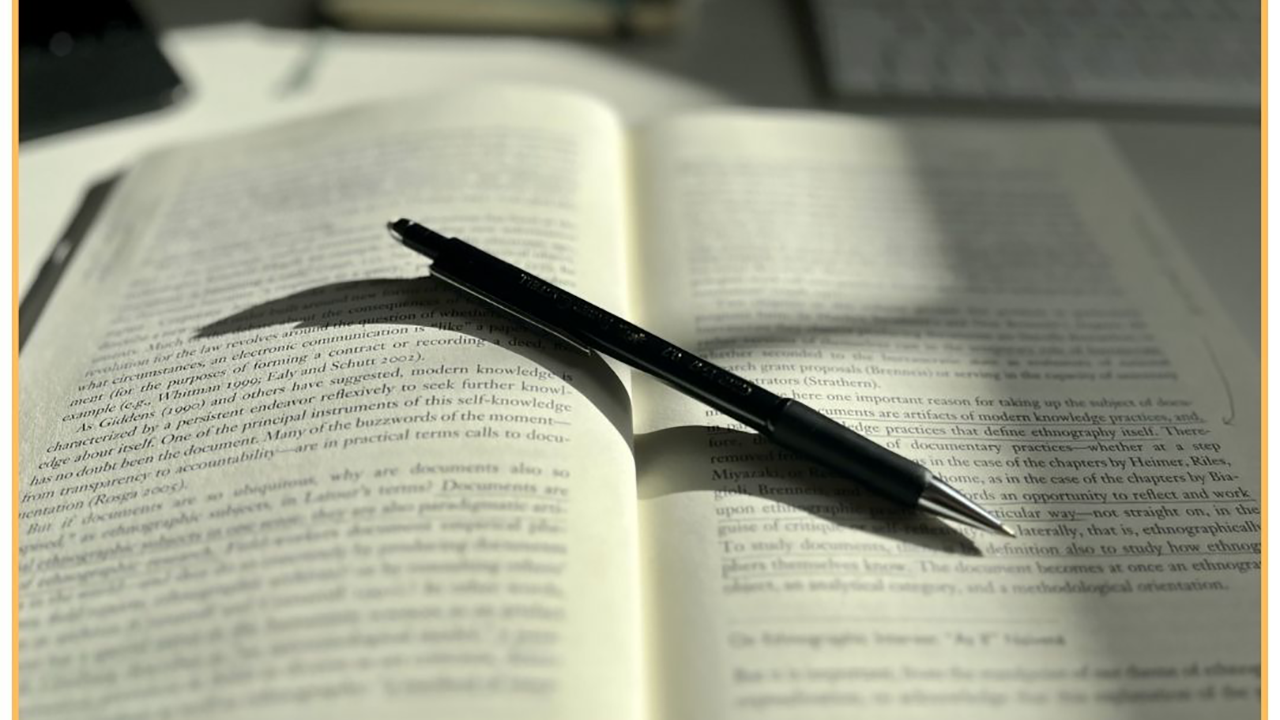
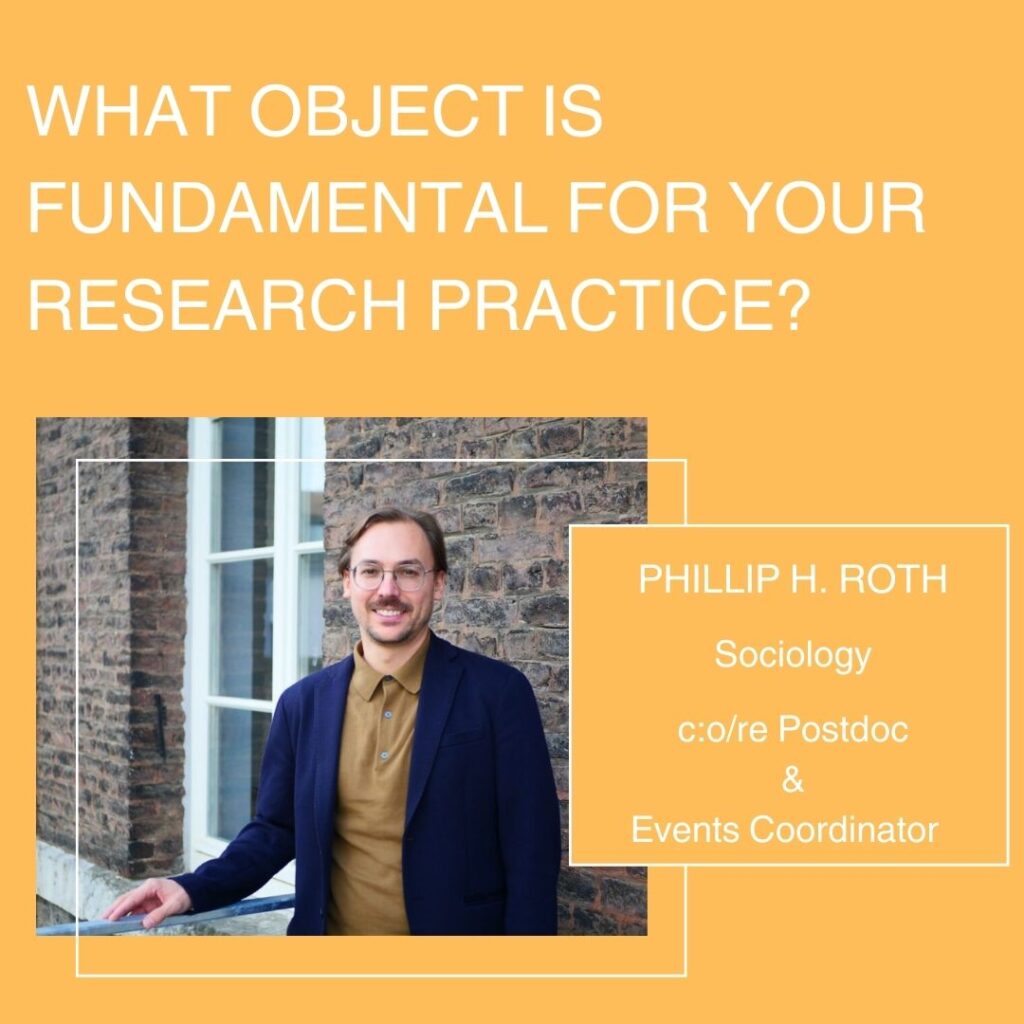
For this edition of the “Objects of Research” series, c:o/re postdoc and event coordinator Dr. Phillip H. Roth shows a picture of his favorite research tool. He is currently working on a book/habilitation project that will be a media history of preprints in science.
“I use mechanical pencils (like the one in the photo) to highlight, annotate, question, clarify, or reference things I read in books. This helps me digest the arguments, ideas, and discourses I deal with in my historical and sociological research. I also have software for annotating and organizing PDFs on my iPad as well as a proper notebook for excerpting and writing down ideas. However, I’ve found that the best way for me to connect my reading practices with my thoughts is through the corporeal employment of a pencil on the physical pages of a book.”

Would you like to find out more about our Objects of Research series at c:o/re? Then take a look at the pictures by Benjamin Peters, Andoni Ibarra, Hadeel Naeem, Alin Olteanu, Hans Ekkehard Plesser, Ana María Guzmán, Andrei Korbut and Erica Onnis.
Inaugurating the collaboration of c:o/re and Ritsumeikan University on Emotionalized Artificial Intelligence
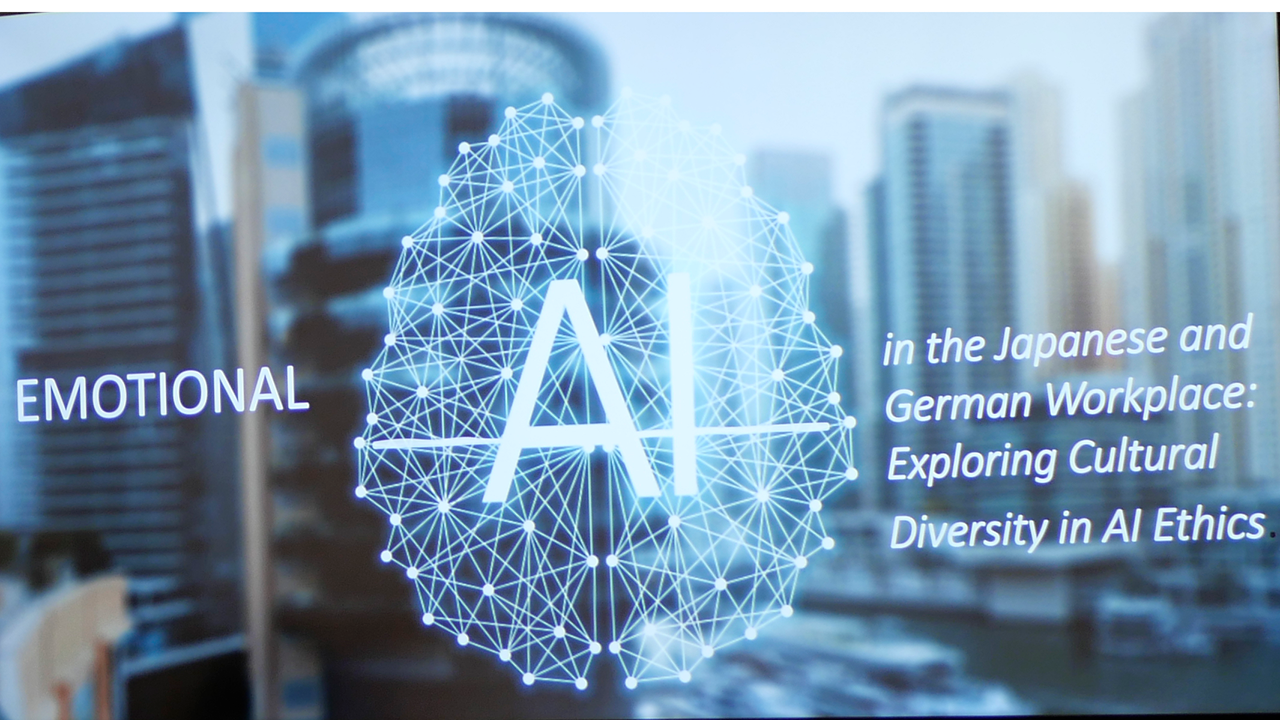
We are delighted to be commencing a collaboration on Emotionalized Artificial Intelligence with colleagues at Ritsumeikan Asia Pacific University. Professor Peter Mantello (Ritsumeikan Asia Pacific University) leads a project funded by the Japan Society for the Promotion of Science, on which c:o/re is a partner, that over the coming three years will compare attitudes in Japan and in Germany on Emotionalized Artificial Intelligence in the workspace. This is explorative pathway contributes to the c:o/re outlook on Varieties of Science.
Being hosted as a short-term fellow at c:o/re, on February 15th, Professor Peter Mantello inaugurated this collaboration by presenting the rationale and framework of this project.
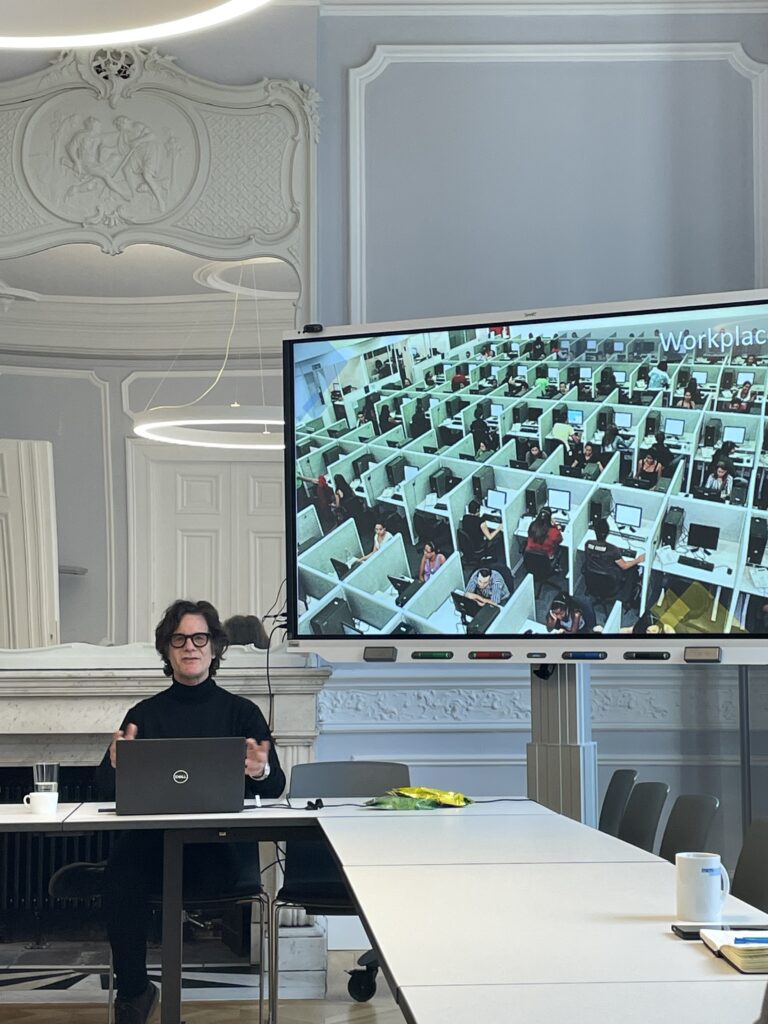
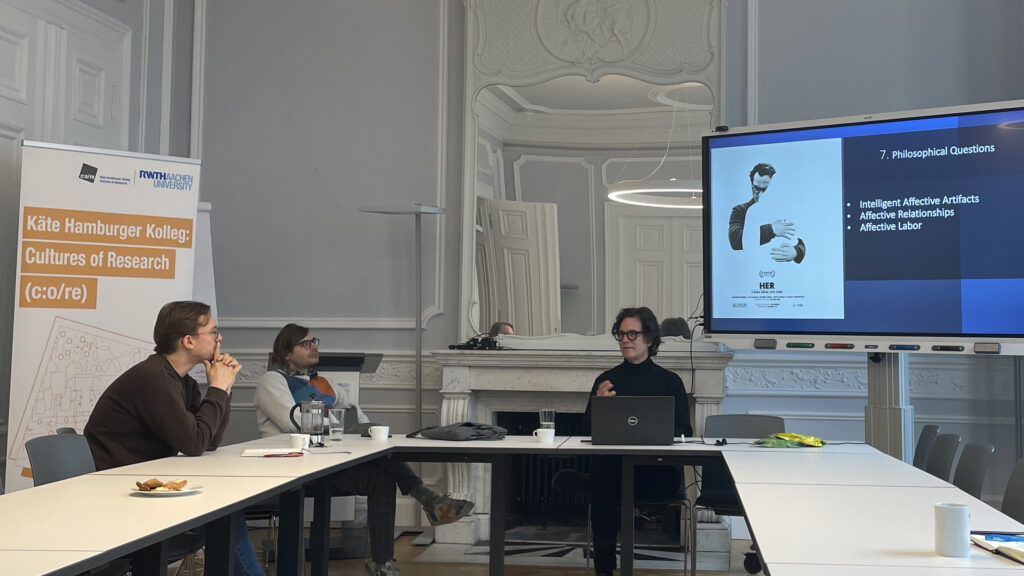
Symposium: Critical Perspectives on the Metascience Reform Movement
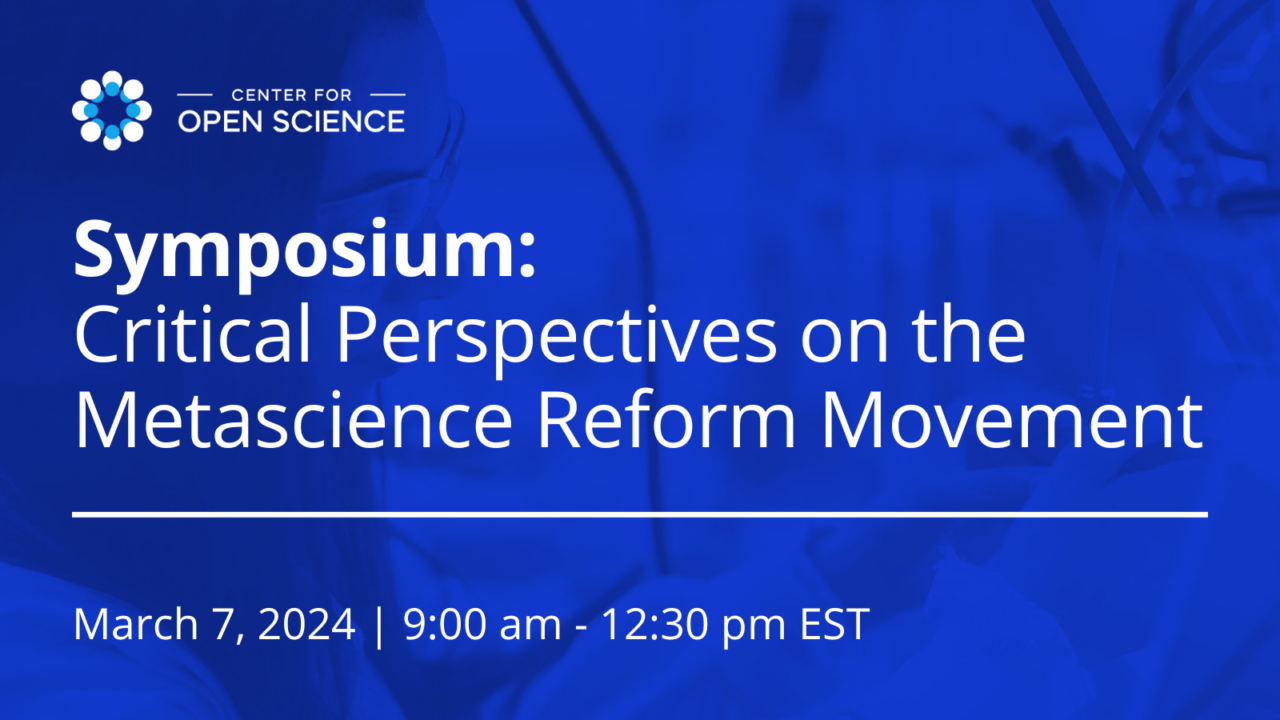
The Käte Hambuger Kolleg: Cultures of Research (c:o/re) is co-sponsoring the Critical Perspectives on the Metascience Reform Movement Symposium by the Center for Open Science, taking place virtually on March 7, 2024, from 9:30 am to 12:30 pm EST.
Metascience is often defined as the scientific investigation of science itself with the aim to improve science. This ‘improving’ part of metascience has been called a reform movement. While the intention to improve science is generally laudable, metascience and the associated movement(s) are not without their critics. The metascience reform movement has for instance, been characterized as, among other things, neoliberal, positivistic, atheoretical, technological, moralizing, bureaucratic, homogenizing, mechanistic, quantitative, psychological (psychologizing), social, civilizing, bullying, exclusive, coercive, activist, and normative. Some of those critical perspectives will be presented and discussed in this symposium.
KHK c:o/re Fellow Dr. Bart Penders will also contribute with a talk on “Shamed Into Good Science”. Symposium: Critical Perspectives on the Metascience Reform Movement
For additional information, including the program schedule and free registration, please visit the symposium’s webpage.
Get to know our Fellows: Bart Penders
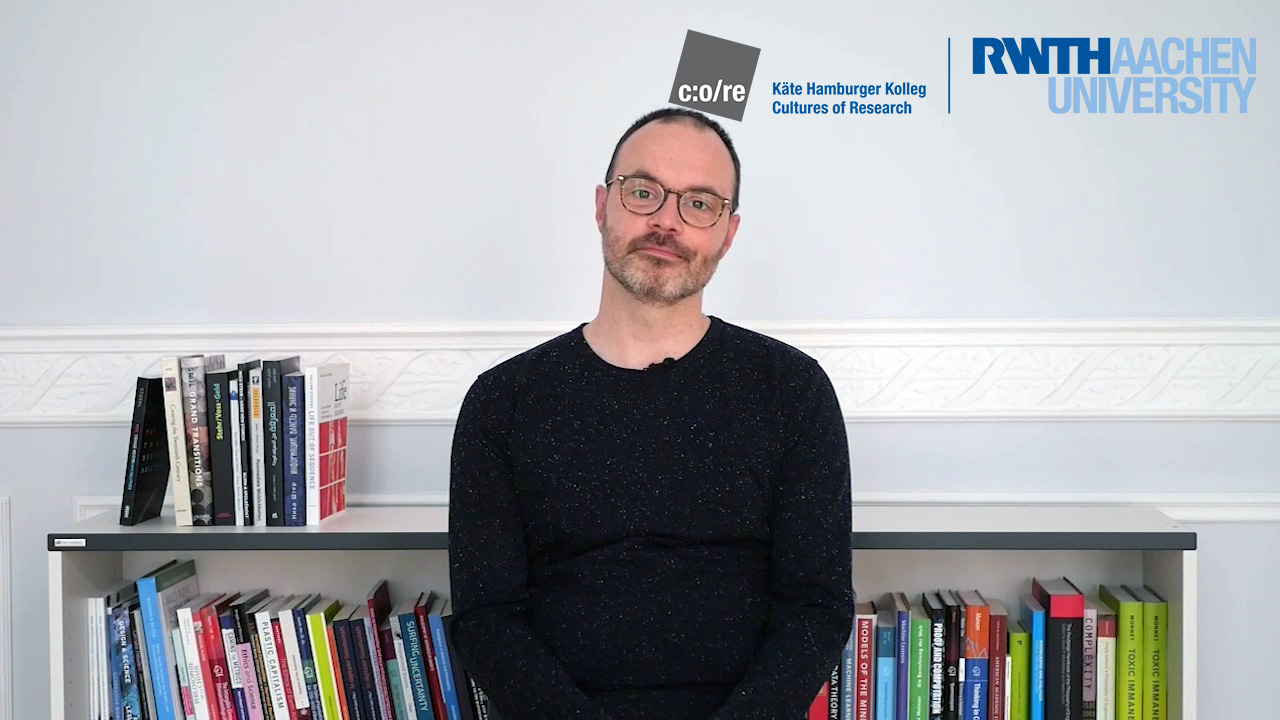
Get to know our current fellows and gain an impression of their research.
In a new series of short videos, we asked them to introduce themselves, talk about their work at c:o/re, the impact of their research on society and give book recommendations.
You can now watch the fifth video of Dr. Bart Penders, PhD in Science and Technology Studies and Associate Professor in ‘Biomedicine and Society’ at Maastricht University, on our YouTube channel:
Check out our media section or our YouTube channel to have a look at the other videos.
Objects of Research: Erica Onnis
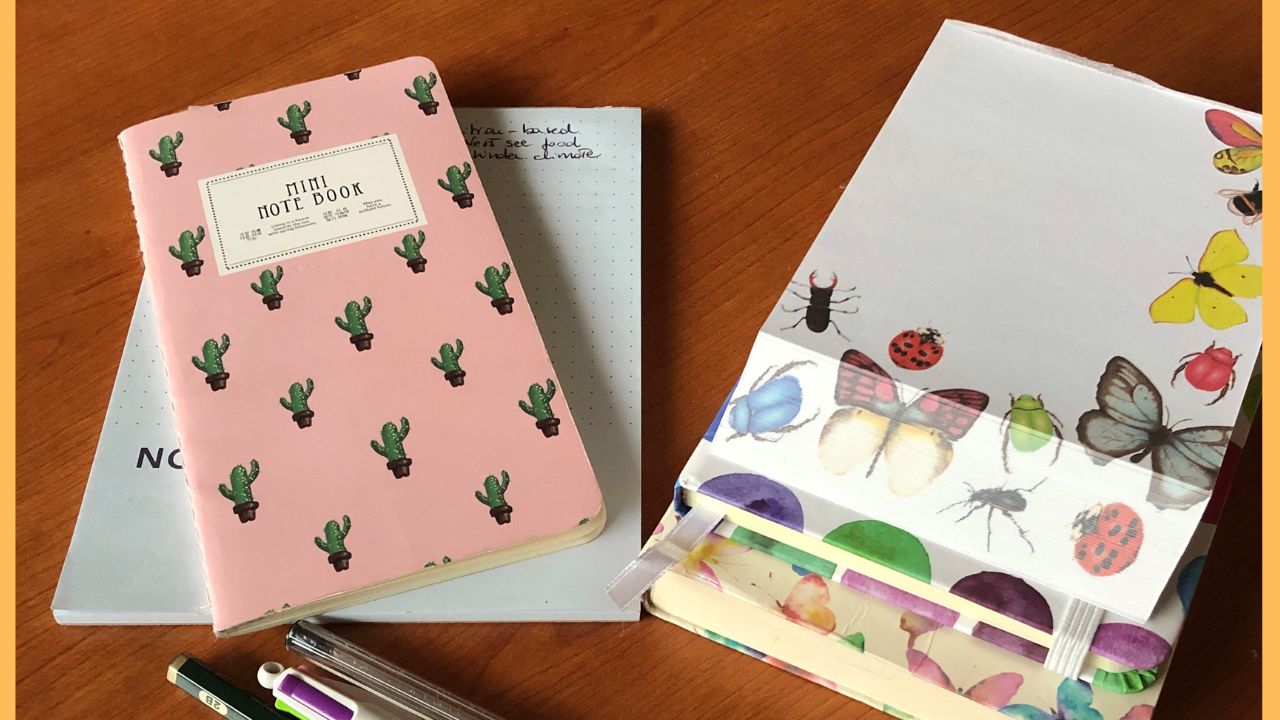

Today we continue our „Objects of Research“ series with a picture by c:o/re Alumni Fellow Dr. Erica Onnis, whose research focuses on the nature of emergent phenomena, and the relation between the notion of emergence and those of reduction, novelty, complexity, and causation.
“When asked about the fundamental object for my reaserch practice, I immediately thought of my computer, which seemed the obvious answer given that I read, study, and write on it most of the time.
Upon further reflection, however, I realized that on my computer, I just manage the initial and final phases of my research, namely gathering information and studying on the one hand, and writing papers on the other.
Yet, between these two phases, there is a crucial intermediate step that truly embodied the essence of research, for me: the reworking, systematization, organization, and re-elaboration of what I have read and studied, as well as the formulation of new ideas and hypothesis. These processes never occur on the computer but always on paper.
Therefore, the essential objects for my research are notebooks, sticky notes, notepads, pens, and pencils.”
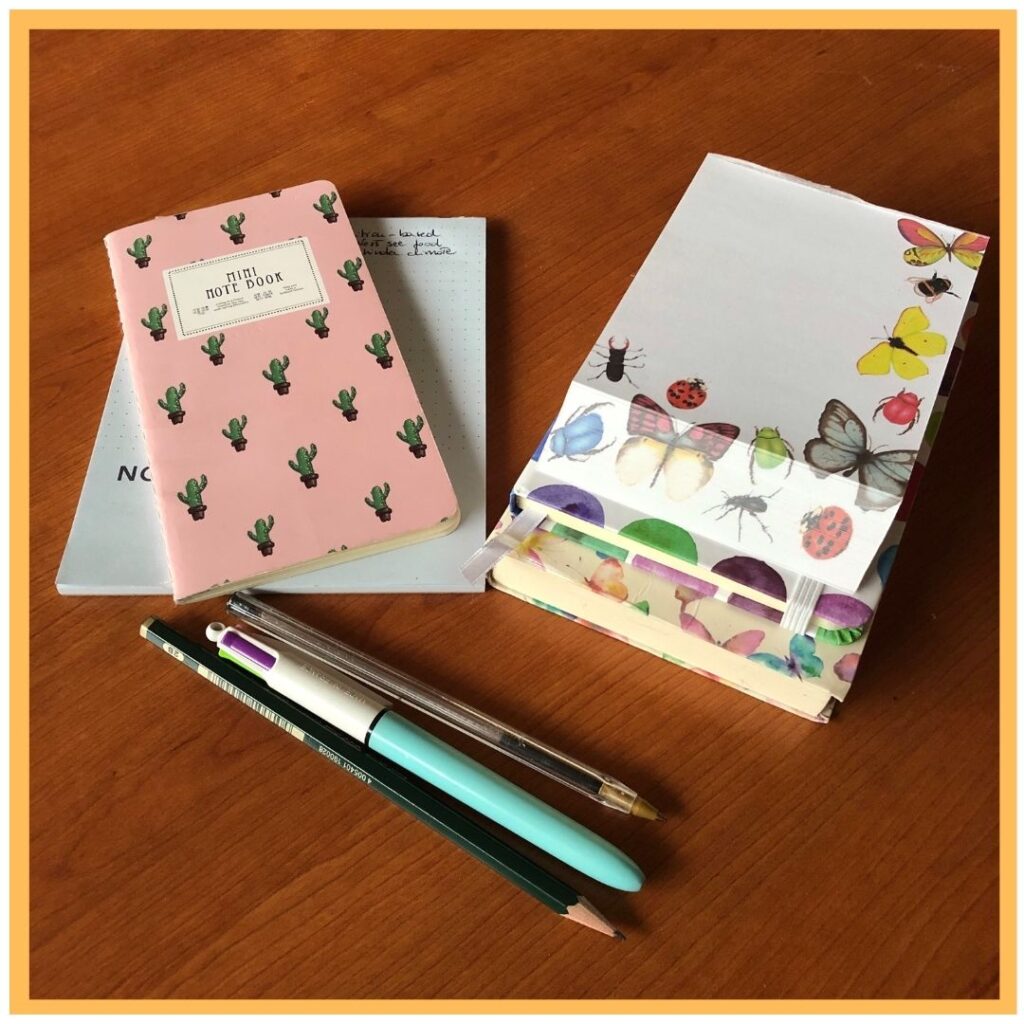
Would you like to find out more about our Objects of Research series at c:o/re? Then take a look at the pictures by Benjamin Peters, Andoni Ibarra, Hadeel Naeem, Alin Olteanu, Hans Ekkehard Plesser, Ana María Guzmán and Andrei Korbut.

